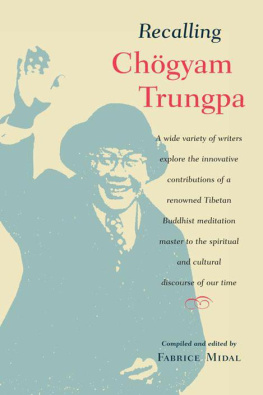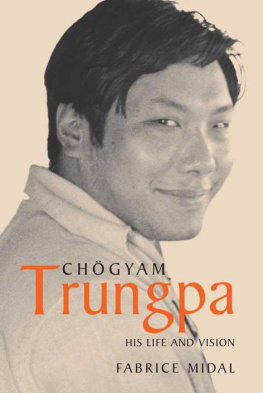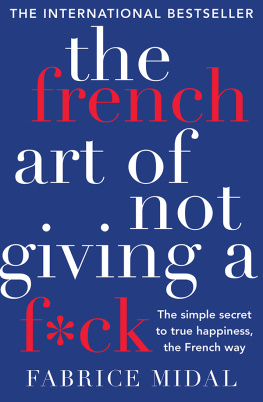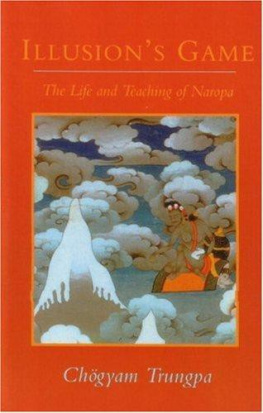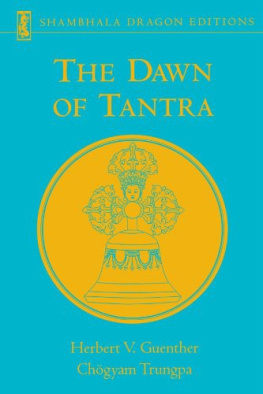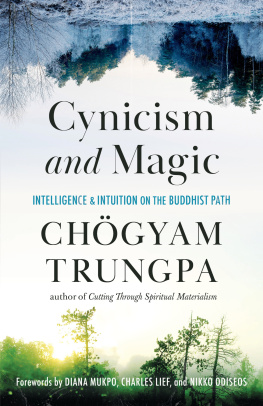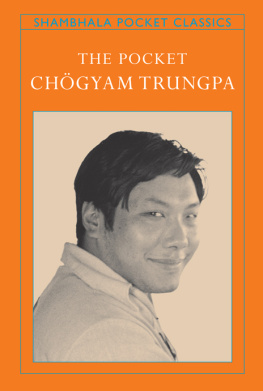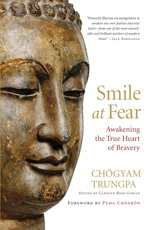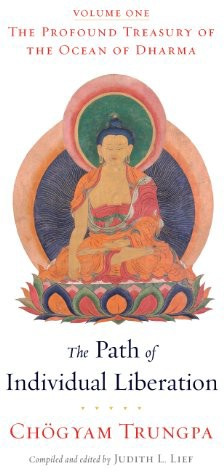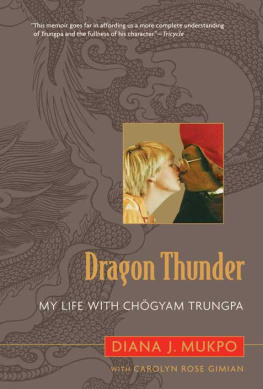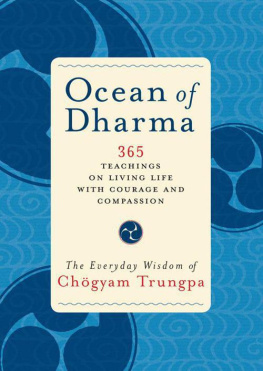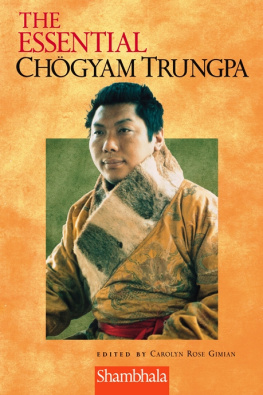RECALLING
Chgyam Trungpa

COMPILED AND EDITED BY
F ABRICE M IDAL

SHAMBHALA
Boston & London
2011
Shambhala Publications, Inc.
Horticultural Hall
300 Massachusetts Avenue
Boston, Massachusetts 02115
www.shambhala.com
2005 by Fabrice Midal
All rights reserved. No part of this book may be reproduced in any form or by any means, electronic or mechanical, including photocopying, recording, or by any information storage and retrieval system, without permission in writing from the publisher.
Library of Congress Cataloging-in-Publication Data
Recalling Chgyam Trungpa / compiled and edited by Fabrice Midal.
p. cm.
Includes bibliographical references.
eISBN 978-0-8348-2162-0
ISBN 1-59030-207-9
1. Trungpa, Chgyam, 1939 1. Midal, Fabrice, 1967
BQ990.R867R43 2005
294.3923092DC22
2005009368
Contents

With the Vajradhatu Board of Directors, waiting to welcome the Dalai Lama outside the New York Dharmadhatu, November 1979. (Left to right) Vajra Regent sel Tendzin, Derek Kolleeny, Chgyam Trungpa, Peter Volz, Karl Springer, Brad Upton, Jeremy Hayward, Ken Green, John Roper, Chuck Lief, Samuel Bercholz. (Back) David Rome, Loppon Lodro Dorje. Photograph 2004 by Mary Lang. Used with permission.
A Message from His Holiness the Fourteenth Dalai Lama
F OLLOWING THE C HINESE takeover of Tibet in 1959 and the flight of many Tibetans into exile, Tibetan Lamas began to be invited to visit other parts of the world. Chgyam Trungpa Rinpoche was among the first. Even though a young man and destined to be the abbot of his monastery in Kham, Eastern Tibet, he had already undertaken the intensive training of a recognized reincarnate Lama. While studying at Oxford University, he was able to develop a sharp understanding of the modern world that he was able to put to good effect when he began to be invited to teach about his own tradition.
When he began to teach in America in the 1970s, Trungpa Rinpoche seems to have caught the public imagination. His books such as Cutting Through Spiritual Materialism were among the first and very successful books about Tibetan Buddhism. Earlier works had been either rather dry academic studies of traditional texts or ill-informed travelers accounts filled with exotic tales of magic and mystery.
His was an influential attempt to share some of the insights and benefits of the teachings of Tibetan Buddhism with a modern audience in terms that they could easily understand and put into effect. Exceptional as one of the first Tibetan lamas to become fully assimilated into Western culture, he made a powerful contribution to revealing the Tibetan approach to inner peace in the West.
March 18, 2004
Preface
F ABRICE M IDAL
T HIS PROJECT ORIGINATED from the proposal of ditions de lHerne to devote a volume in its prestigious Cahier series to Chgyam Trungpaprestigious, since principal figures of world thought are the subject of each volume: Heidegger, Pound, Rimbaud, Gunon, Thoreau, Joyce.... Each volume brings together numerous selections, many of them published for the first time, as well as photographs.
Shambhala Publications welcomed the idea of publishing an anthology in commemoration of Chgyam Trungpa. However, it was not possible to replicate the work done in France for a specialized readership, which would have been an unusually long work. Shambhala has, in effect, produced a different project.
A selection of texts was made, excluding, not without difficulty and regret, a number of entries that will appear in the French edition. Extracts from texts or interviews were chosen for a chapter titled Testimony and Reminiscence in order to allow a few more authors to participate in this homage.
An effort was made to represent French thoughtwhich is particularly active in examining the work of Chgyam Trungpaand four texts, translated here, are the result.
The authors presented here are diverse, representing the wide range of Chgyam Trungpas readers today. Sometimes they were friends, companions on the journey, or students of Chgyam Trungpa, but sometimes, as in my case, they never even met him. There are Buddhists involved in various traditions, whether Theravada, Zen, or Tibetan Buddhism, including teachers responsible for transmitting the dharma; there are also those who are not especially concerned with this tradition. Their presence is indicative of how Trungpa Rinpoches work as an artist or a visionary thinker has influenced fields beyond Buddhism.
I would like to thank all the authors and photographers, whether included or not in this American edition, for having accepted the invitation to participate in this adventure with such enthusiasm and grace.
I would especially like to thank His Holiness the Dalai Lama for his encouragement toward this project and the alacrity with which he responded to the invitation to contribute the opening message.
Such a book could not be possible without the constant efforts of Carolyn Rose Gimian, who has continuously accompanied me in this enterprise. Beyond even the personal debt that I owe her, it is important to emphasize what any study of the work of Trungpa owes to her. As the head of the archives that she founded and for a long time directed, she preserved a considerable collection of documents, without which no serious study could be imagined. Her edition of The Collected Works of Chgyam Trungpa is a historic event and an incomparable reference.
Also crucial was the involvement of Kendra Crossen Burroughs, an editor at Shambhala Publications, whose work in giving this volume its own coherence was done with an exemplary discipline and seriousness. Her attention to the work of Chgyam Trungpa, whose books have been placed in her editorial care at Shambhala Publications for a number of years, is extremely precious and of the highest level of refinement, and I could rely on it with confidence.
I am well aware that the greatness of the work of Chgyam Trungpa, the richness of interpretation that it can sustain, makes this undertaking quite limited. A number of important authors could not be invited to participate here because of the lack of space, and many aspects of the work of Chgyam Trungpa could not be approached. May many other projects be successfully undertaken in order to allow the depth of this work to be plumbed, this work that inspires a new way of thinking about the spirituala way of thinking that speaks to the destiny of our times.
I would also like to thank the following people for their help and their loyalty, without which I could not have been involved in this adventure, which has taken over three years: Franoise Dufayet, Lucie Clair, Douglas Penick, Martha Bonzi, Steve Brooks, Fabien Ouaki, and Greg Seton.

On his horse, Drala, 1980. Photograph by Marvin Moore. Used with permission.
Introduction
F ABRICE M IDAL
O F THOSE WHO introduced Buddhism to the West, Chgyam Trungpa had a genius for understanding how to cross those cultural, historical, and ideological barriers that make the transmission of any genuine spiritual tradition so difficult today. His efforts to find a living language that would be faithful to the origins of the Buddhist tradition led him to an unusually piercing analysis of the modern worldthat world which has, for better or worse, become the only horizon open to us. In this world, language has become insignificant and deprived of its own resonance for various reasons, primarily the triumph of advertising.
Next page
